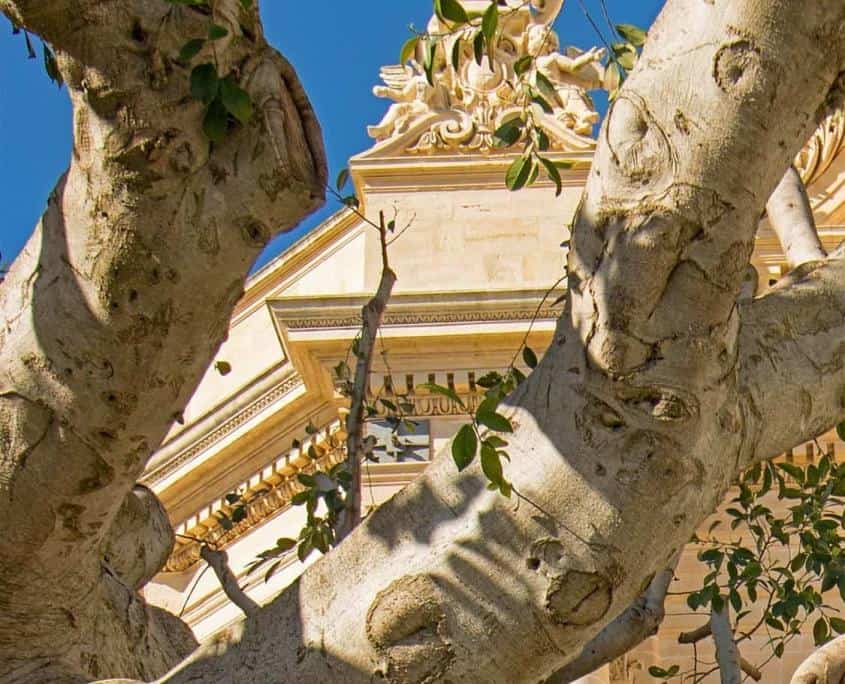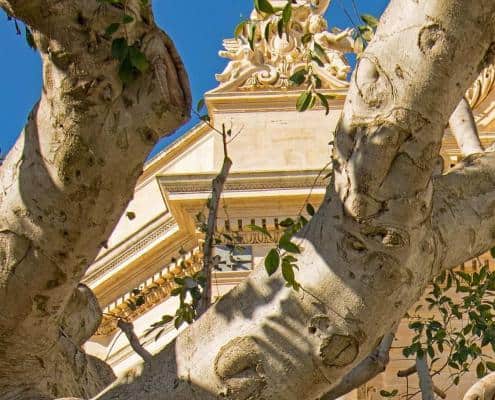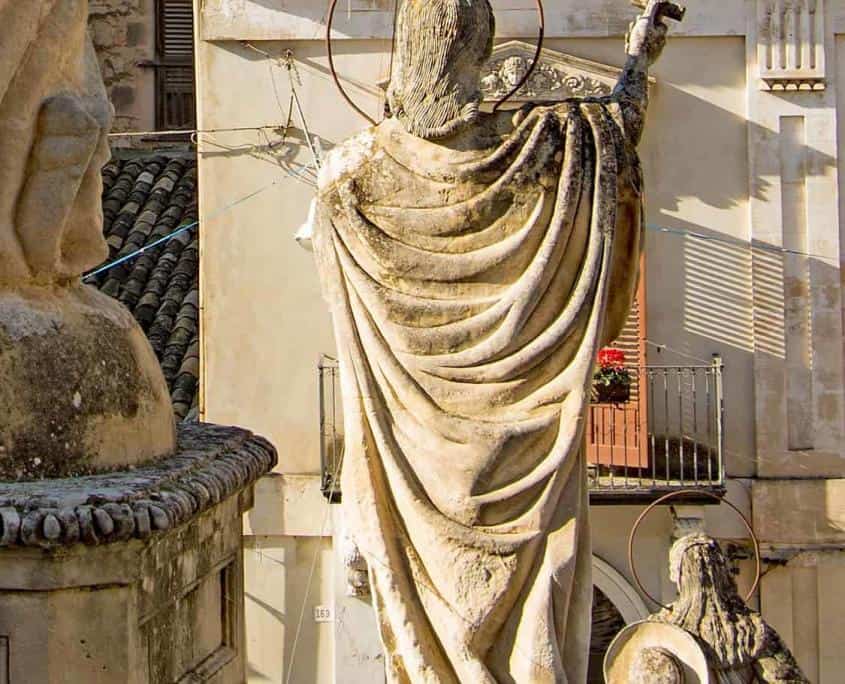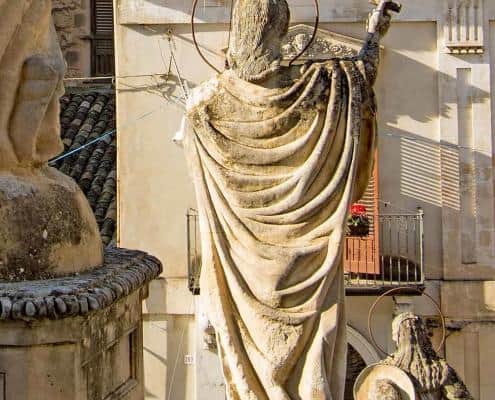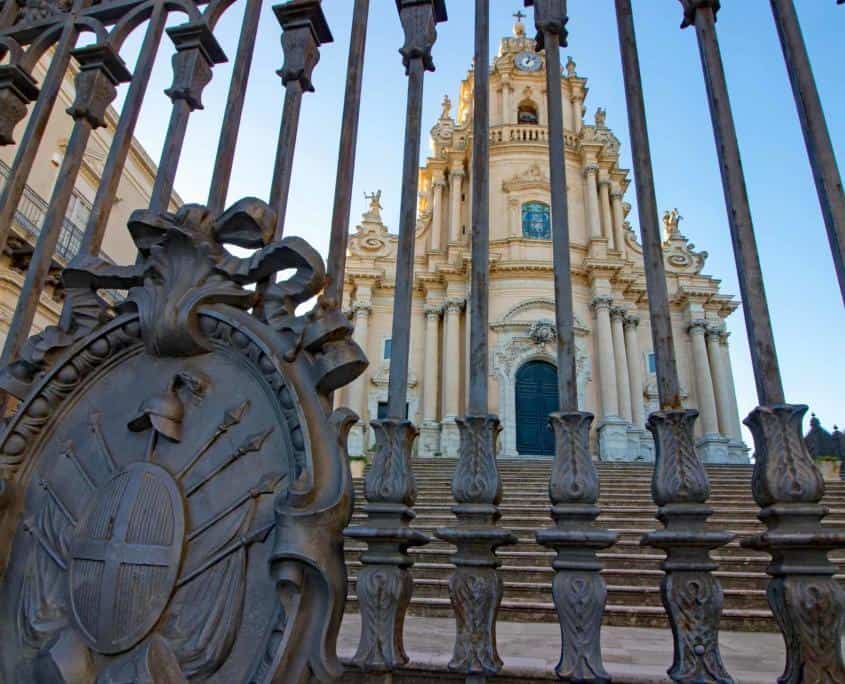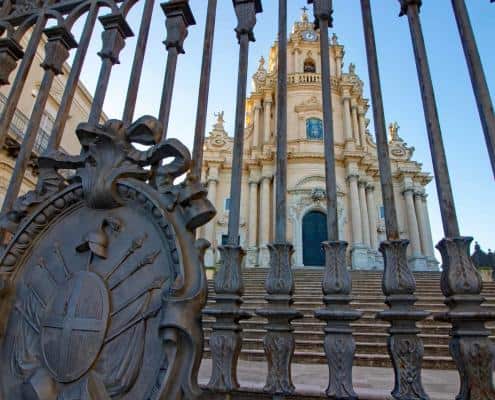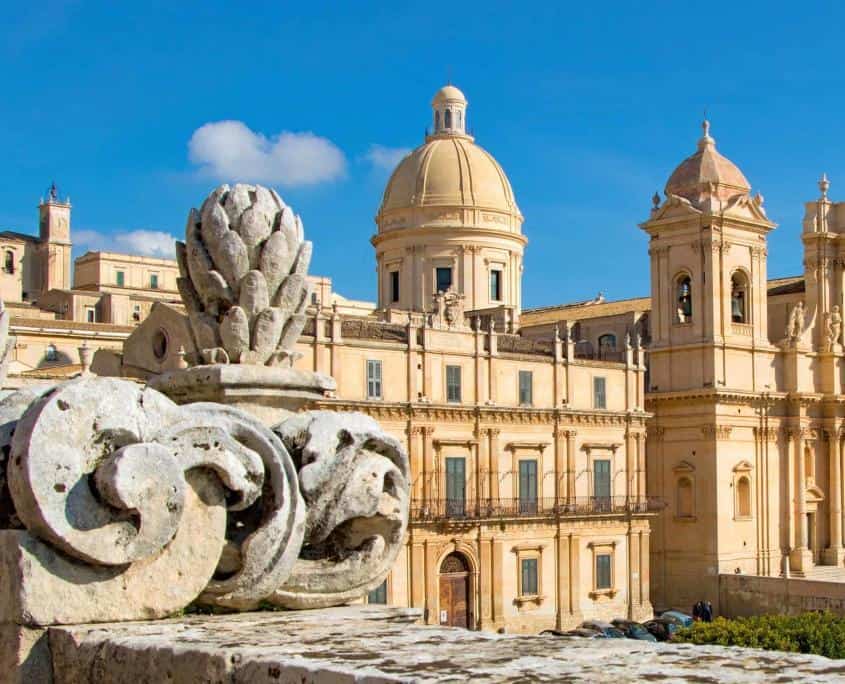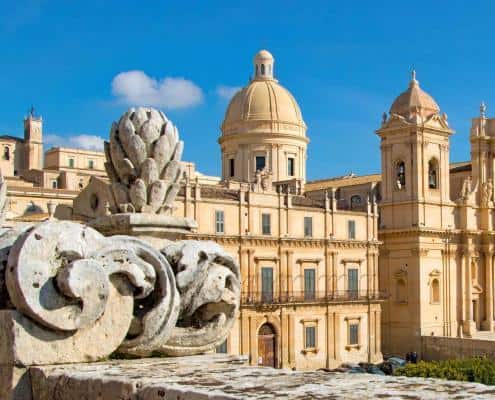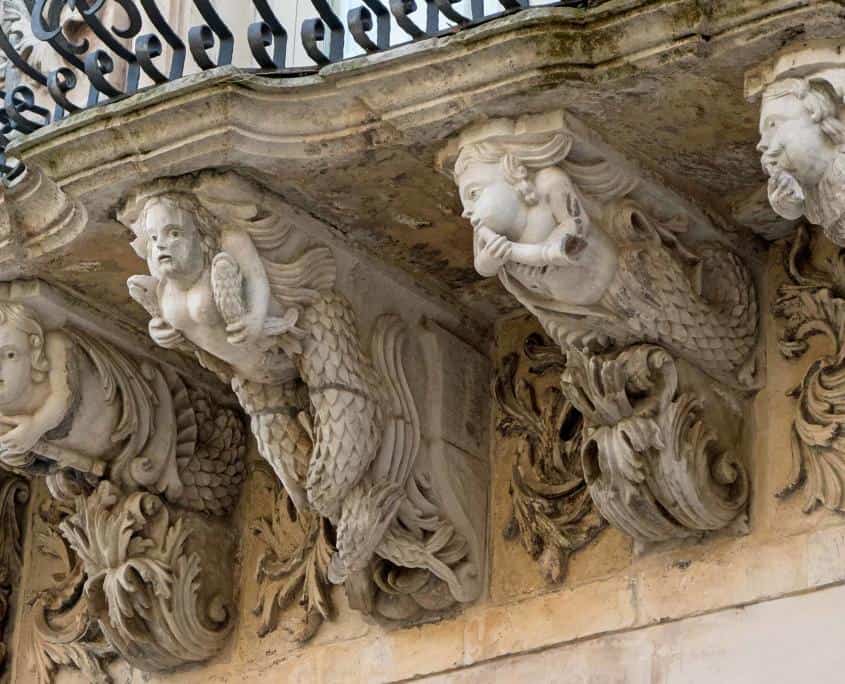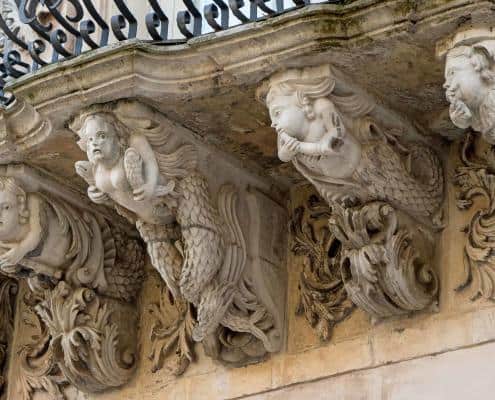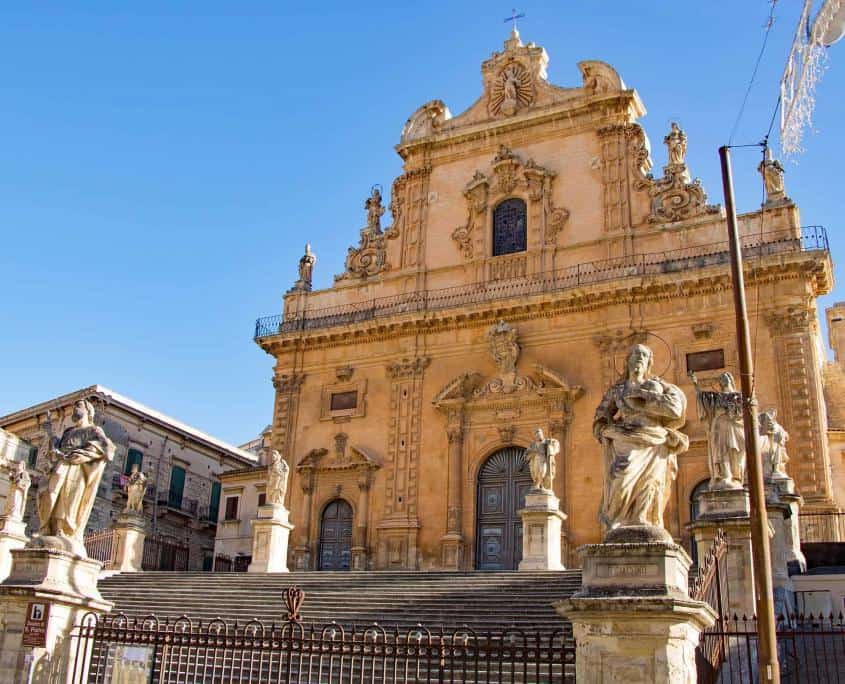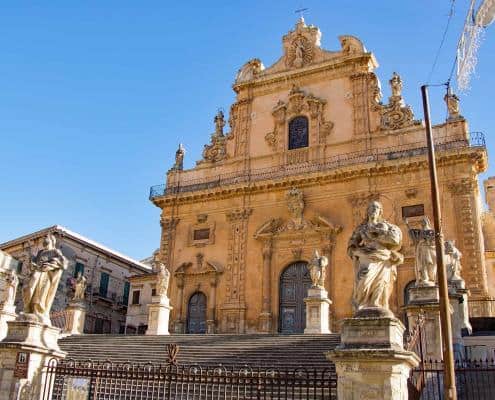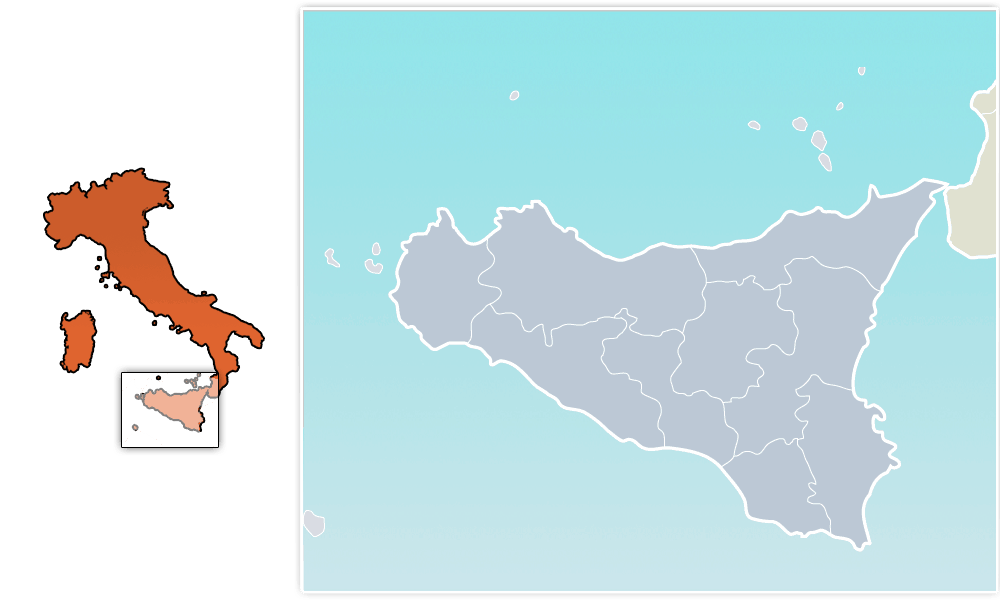The Baroque Towns of Sicily (Val di Noto)
What are the Baroque Towns?
The typical Sicilian Baroque originated in southeastern Sicily at the beginning of the 18th century and includes the provinces of Catania, Ragusa, Syracuse, Enna and Caltanissetta. The provinces belong to the Val di Noto area. Val does not stand for Valle (valley), but for an administrative area that was founded during the Arab occupation.
How the Baroque came to Sicily?
The reason for the introduction of the Baroque in Sicily was the earthquake of 1693, which had distroied many cities. Thanks to the wealth of the power that prevailed at the time, most cities were rebuilt.
In the 18th century, the Baroque was modern with its typical structural elements, which are particularly visible in the great balcony constructions, the facades of the palaces as well as in the open stairs in front of the cathedrals.In 2002, eight towns of Val di Noto (Caltagirone, Catania, Militello, Modica, Noto, Palazzolo Acreide, Ragusa and Scicli) were declared a UNESCO World Heritage Site.
What to Visit in Sicily in the Baroque Towns?
Catania
After the devastating earthquake of 1693, only Castello Ursino, the cathedral’s apside and a few apartment buildings remained.
When the city was rebuilt, it was laid out straight to be able to evacuate the population in the event of a disaster. The main streets of Via Etnea and Via Sangiuliano were built. The Via Etnea Catania cuts through like a sword. It runs from north to south with unobstructed views to Mount Etna. Via Etnea is home to the baroque centre with many shops.
The central square of Catania is the baroque cathedral square with the Cathedral of Santa Agata, dedicated to the patron saint of Catania.
In the Cathedral Square is the beautiful elephant fountain with the symbol of Catania, the elephant “Liotru.” It was carved from porous volcanic rock and bears an Egyptian obelisk.
Parallel to Via Etnea, Via dei Crociferi, one of the most beautiful streets in the Sicilian Baroque with four Baroque churches runs at just 200 metres. With its baroque buildings, Catania is one of the
Cities of the Val di Noto
Ragusa
Ragusa Ibla in southeastern Sicily, about 20 km from the sea, is a pearl among the late Baroque towns of Val di Noto. Ragusa covers a plateau of 350 to 600m elevation and is divided into two districts: Ragusa superiore (upper city) and Ragusa Ibla (the impressive Baroque old town). Typical of Ragusa are the late Baroque palaces with the heavily decorated balconies, each of which tells a story with its figures.
Modica
Modica has an interesting location. Due to its strategic location on the hill, surrounded by canyons, Modica was already inhabited in 300 BC. Visible on a rocky outcrop is the clock tower, whose mechanical clock has been clearly indicating time since 1725. It was built in 1725 after the earthquake on the ruins of a tower of the Castello dei Conti. The mechanical clock with counterweights is still original and fully functional.
Sizilian late Baroque Modica has been a World Heritage Site since 2002. It is referred to as the City of a Hundred Churches with a cathedral in the Lower Town (San Pietro) and one in the upper town (San Giorgio).
Modica is famous for its chocolate, which is still made according to ancient original recipes of the Aztecs.
Noto
The small town of Noto is still an insider’s tip away from mass tourism. You enter the baroque city centre through the royal city gate Porta Reale and thus get into the wide pedestrian passage Corso Vittorio Emanuele. The city centre is characterized by honey-coloured baroque facades of churches, monasteries and posh palaces. The view is automatically directed upwards to the decorations and statues, the bulbous balconies with the wrought iron grids and the majestic facades. We particularly recommend the ascent to the bell tower of the church of San Carlo. Once you have conquered the narrow spiral staircase, you will be rewarded with a wonderful view over Noto and the surrounding country.
How to come to the Baroque Towns in Sicily?
Arrival
By car
Whether rental cars or by own car, you need a parking space at your destination. In addition, there is the concern to leave nothing visible in the car and the question of whether you are allowed to drive into the city without a plaque.
By train
The cities of Sicily are largely easily accessible by train connections. If you bring some time and prefer slow tourism, the train is an option. A train ride usually takes you in the center of the city. Where the life is.
By air
The nearest airport is Catania Fontanarossa. From there you will come by shuttle bus to Catania or by car wherever you want.
Peace of Mind
When you book a trip with us, we take care of all this-including a hotel and escort program with a private driver or rental vehicle, as you prefer.
Hotels
Comments
In order to be able to see as many places as possible, you should either choose the accommodation strategically or move from place to place.
Hotels
We have a few selected hotel partners where we almost always get good rooms. It’s not always easy, but we’re already able to do that.
- Hotel Palace Catania (4 stars central)
- Liberty Hotel (4 stars central)
- Hotel proposal: Le suites del Duomo
Special accommodation
Would you like to move into your quarters in an exclusive villa? Or live just outside in a noble country house? We are happy to take care of your wishes. A hotel with charm or something economical for smaller budgets. We know the area well and will certainly find something you like.
Please note your preferences with the booking request.
As soon as we get your request and know what matters to you, we take care of it and prepare a custom proposal. To do this, we need to know whether location, comfort, price or charm matter most to you.
History of the Sicilian Baroque Towns
The baroque towns in Sicily all share a common origin. This is due to the severe earthquake that struck the Val di Noto on the evening of 9 January 1693.
Just two days later, when people had already begun the clean-up, a second earthquake gave the region the rest. Everything that still stood was thrown to the ground.
Another sea quake triggered a tsunami and inundated much of the coast in southern Sicily.
In Catania alone, the earthquake claimed the lives of about 16,000 people, Ragusa lost half of its population and Syracuse a quarter. The aftershocks continued for more than a year.
The Aragonans, the Spanish rulers who ruled Sicily at the time, decided to rebuild most of the cities destroyed by the earthquake. Catania and Ragusa were given a new city structure on this occasion. Noto was rebuilt elsewhere.
In the 18th century, the Baroque was modern with its typical structural elements, which are particularly visible in the great balconies. The façades of the palaces as well as in the open stairs in front of the cathedrals.
Food and Wine in Sicily
Sicily is home to local delicacies on all corners. Almost every place has its own creations, which you should definitely try. The sweet delicacies are quite typical, of course.
At this point, the pizzuta almond, an almond variety, is to be mentioned. The marzipan and the oranges, which are served times tender, sometimes seasoned. Try the typical Sicilian cannoli and cassatine and all made from almonds of the surrounding almond groves.
Mustazzola is also a treat for the palate. A dough filled with honey with figs and almonds. Or Safran cake with bitter orange flavour.
The delicate Moscato Noto d.o.c., which is made in the area, fits the dessert. Whereas dry wine is drunk for dinner: Eloro DOC (from the Nero d ‘Avola grape). Or the Rosso or Bianco Sicilia IGT as well as Inzolia Sicilia IGT.
In summer, the ubiquitous frozen granita is recommended. Especially almond granita, mulberry granita (granita di gelsi), lemon granita and orange granita are real favorites and only enjoyed fresh on site.




